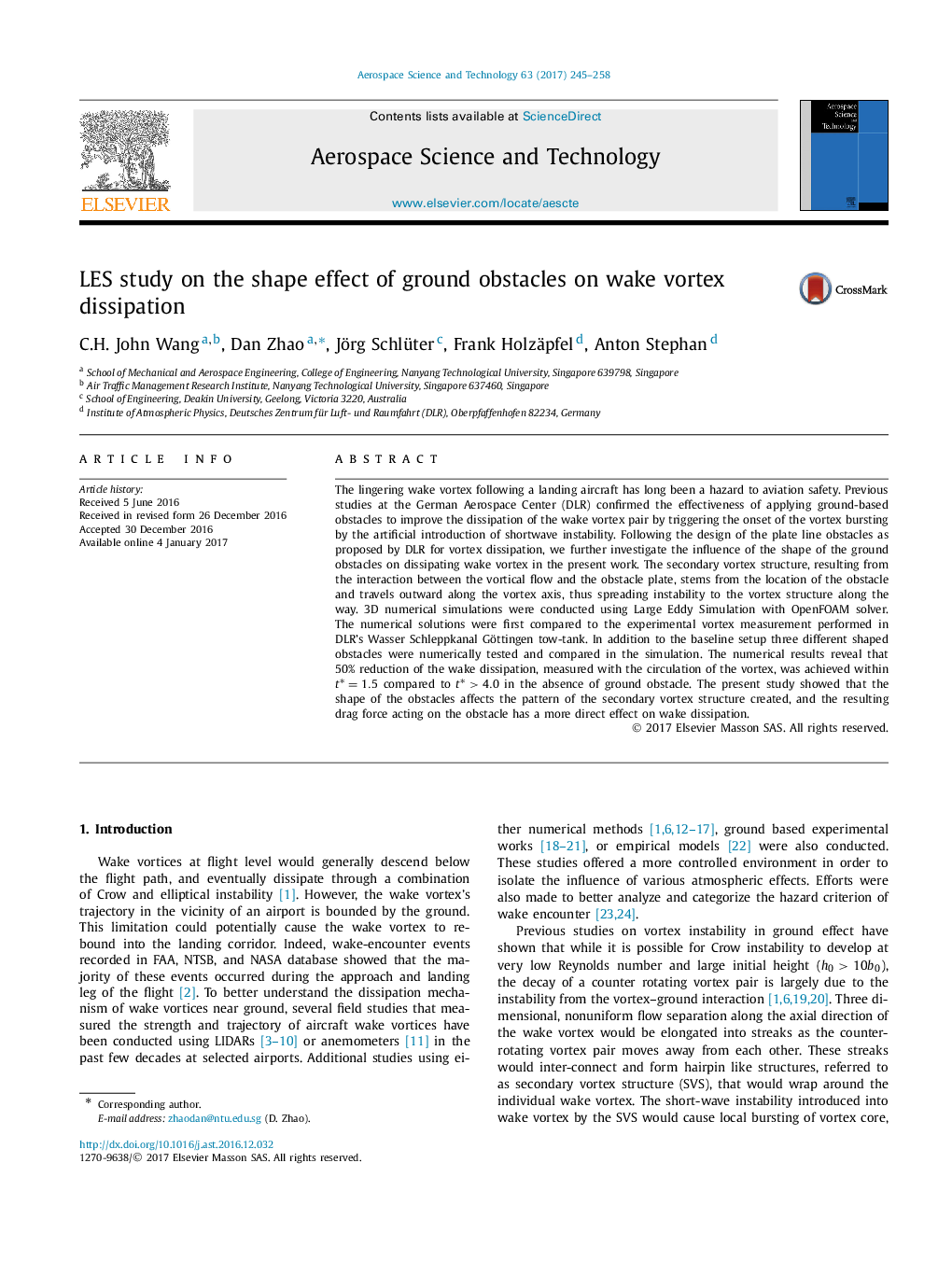| Article ID | Journal | Published Year | Pages | File Type |
|---|---|---|---|---|
| 5473047 | Aerospace Science and Technology | 2017 | 14 Pages |
The lingering wake vortex following a landing aircraft has long been a hazard to aviation safety. Previous studies at the German Aerospace Center (DLR) confirmed the effectiveness of applying ground-based obstacles to improve the dissipation of the wake vortex pair by triggering the onset of the vortex bursting by the artificial introduction of shortwave instability. Following the design of the plate line obstacles as proposed by DLR for vortex dissipation, we further investigate the influence of the shape of the ground obstacles on dissipating wake vortex in the present work. The secondary vortex structure, resulting from the interaction between the vortical flow and the obstacle plate, stems from the location of the obstacle and travels outward along the vortex axis, thus spreading instability to the vortex structure along the way. 3D numerical simulations were conducted using Large Eddy Simulation with OpenFOAM solver. The numerical solutions were first compared to the experimental vortex measurement performed in DLR's Wasser Schleppkanal Göttingen tow-tank. In addition to the baseline setup three different shaped obstacles were numerically tested and compared in the simulation. The numerical results reveal that 50% reduction of the wake dissipation, measured with the circulation of the vortex, was achieved within tâ=1.5 compared to tâ>4.0 in the absence of ground obstacle. The present study showed that the shape of the obstacles affects the pattern of the secondary vortex structure created, and the resulting drag force acting on the obstacle has a more direct effect on wake dissipation.
